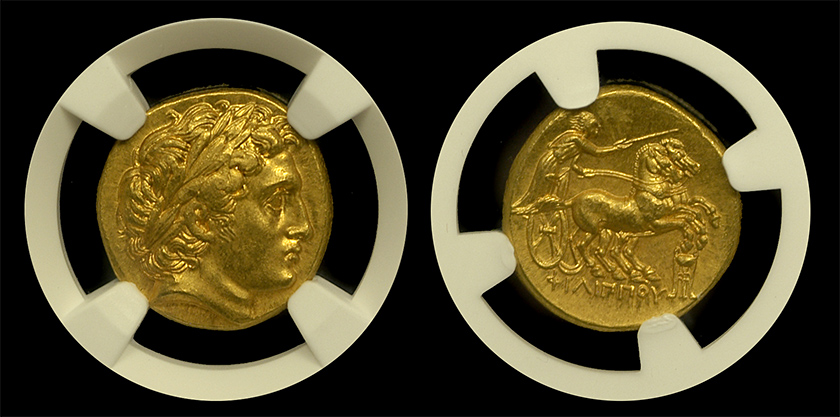
In the early 4th century BC Philip II's standardized coinage system of Macedon was established throughout his kingdom. His coins quickly became one of the most coveted coins in the ancient world. One of Philip II's most notable achievements is his standardized coinage system. Additionally, he was also known as a skilled strategist and military leader. Furthermore, through a series of successful military campaigns, Philip II expanded Macedonian territory.
The Philip II Gold Stater was a symbol of wealth and power. In short, it was a testament to the artistry and precision crafted by skilled Greek minters. The coin's weight and measurements ensured its value. Meanwhile, It made it useful for everyday purchases and large-scale military expenses.
Portrait of Alexander himself
Alexander the Great died at the very young age of 32 in 323 BC. Philip III, Alexander the Great's half-brother, minted coins with the design types established by their father. However, Philip III coins depiction of Apollo's head is quite unique. In fact, some scholars believe it is a portrait of Alexander instead of setting them apart from all the others. These coins became a staple of the Macedonian economy, helping to solidify its political and economic power.
Over time, Philip II Gold Staters have become a rare and highly sought-after artifact of ancient Greece. Above all, only a few survived in pristine condition. It remains a fascinating window into the world of ancient Greek coinage. Consequently, so has Philip II's standardized coinage system and the legacy of one of history's greatest empires.
